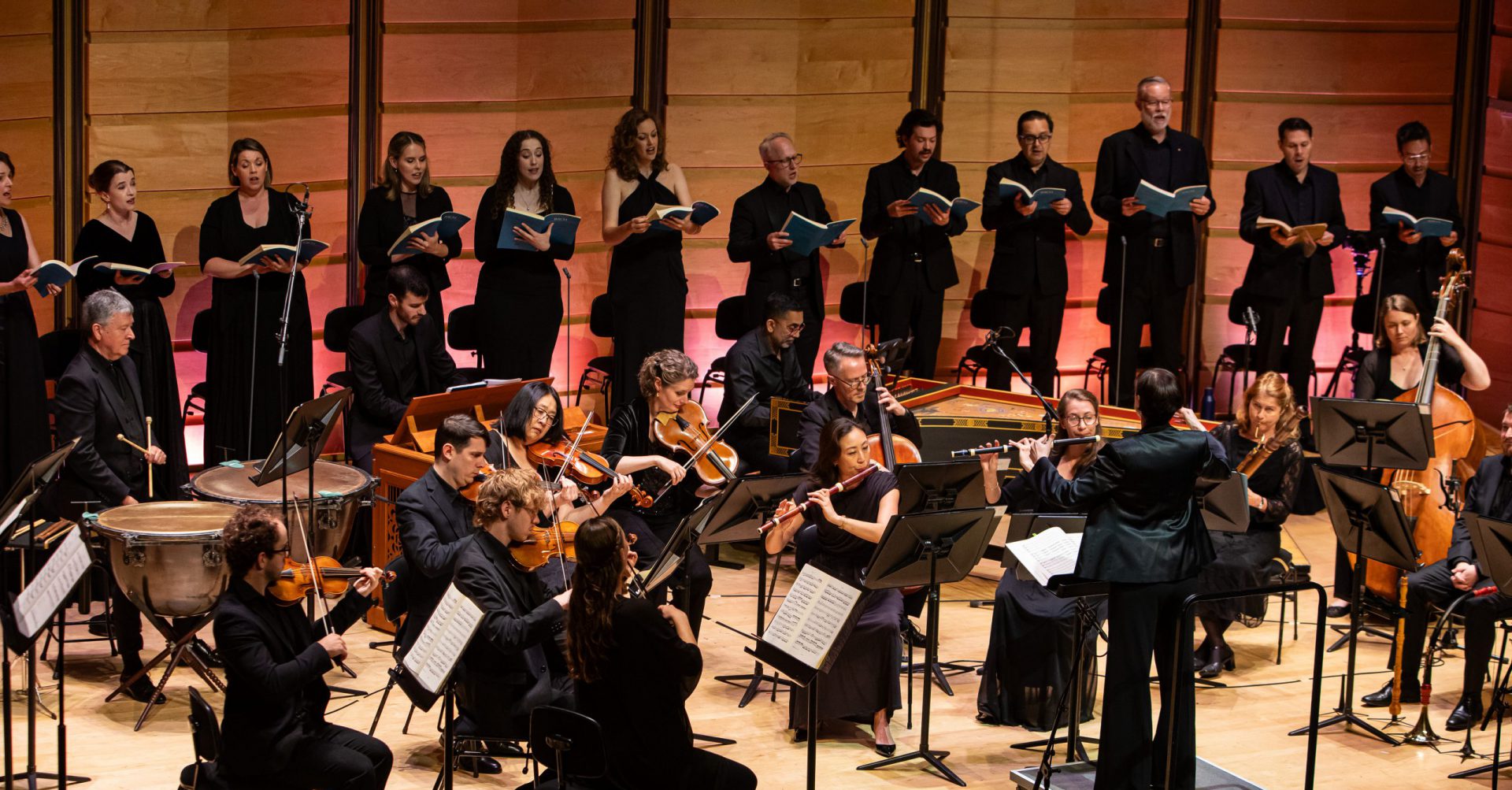It is never too early – even in November – for Bach’s Christmas Oratorio.
The Oratorio is really a cycle of six cantatas, one performed each day from Christmas Day. It is a feat to perform them in one sitting.
From the outset we can glimpse Bach’s facility for reinvention. The majestic opening – Jauchzet Frohlocket – is an adaptation to divine ends of Bach’s earlier secular cantata Tonet ihr Pauken. The strings seemed to lag slightly behind in the beginning, but it was performed at a lively dance pace and the repeated chords on the organ gave it body. Andrew Goodwin immediately made himself known in the somewhat eerie opening recitative – ‘Es begab sich aber zu der Zeit’. His is a mellifluous voice made for recitatives.
One of the most fascinating moments in the first cantata is the chorale/recitative ‘Er ist aud Erden kommen arm’. It is in dialogical style – a bit like much of BWV 138, for example – where a sturdy chorus is interrupted by a solo voice that wavers with uncertainty or longing. The solo bass voice here was Thomas Flint’s, whose voice seemed to waver a bit too often at times. That was most apparent in the following aria – ‘Grosse Herr und starker Konig’ – which demands a full-bodied, sinewy bass voice.
One of the sweetest moments of the entire oratorio is the opening of the second cantata – a sinfonia in pastorale style. Bach’s scene-setting is remarkable. Depicting as it does the pastoral setting of Christ’s birth, the sinfonia employs that most pastoral of instruments, the oboe da caccia. And the rhythm rocks side-to-side as if in a lullaby. But through it all there is a tinge of the tragedy that follows.
Susannah Lawergren then makes her shining debut half-way through the second cantata as ‘Der Engel’. A bit of energy is injected into this otherwise quiet second cantata in the ‘Ehre sei Gott in der Hohe’ chorus. And what a chorus! It was performed at a sprightly tempo and the voices formed an impressive unity despite tight counterpoint and some very meandering melodies.
The third cantata has two particularly pleasing arias. The first is a duet, ‘Herr, dein Mitleid, dein Erbarmen’, performed here by Bonnie de la Hunty and David Greco and sweetened by oboi d’amore. The second is ‘Schliesse, mein Herze, dies selige Wunder’. There is a delightful introduction on violin, performed expressively but not ostentatiously by Simone Slattery.
In the fourth, Madeleine Easton made good use of space. ‘Flößt mein Heiland, flößt dein Namen’ contains several repeated passages. Imitating the Venetian coro spezzati technique, she positioned oboes and sopranos at opposite ends of the Recital Hall to give an echo effect. Then, again, we see Bach’s ability to recycle a good tune. ‘Ich will nur dir zu Ehren leben’ capitalises on the distinctively catchy tenor aria from Bach’s earlier secular cantata, Hercules at the Crossroads. Timothy Reynolds coped well with the quick tempo and the many melismas.
The fifth cantata, in particular, is redolent of many of Bach’s Passion settings. The ‘Ehre sei Gott’ chorale returns, with all its Passion melodrama. And its next chorus, ‘Wo is der neugeborn Konig der Juden’ is strikingly similar to the ‘Wir haben keinen Konig’ of the St John Passion. Each was performed with vigour and directed with a keen musicality. This review cannot conclude without special mention of Michael Dixon on corno, who performed incredibly difficult passages largely faultlessly.
